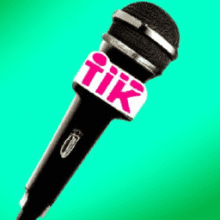Secrets Of Crafting Compelling Meta Tags
Are you looking to enhance your website’s visibility and attract more traffic? Unlock the Secrets of Crafting Compelling Meta Tags! Gain insight into the world of meta tags and discover how they can significantly impact your website’s performance. With this valuable knowledge, you can effectively optimize your meta tags and boost your website’s ranking on search engine result pages.
Crafting compelling meta tags requires understanding the importance of concise and descriptive information. Meta tags play a crucial role in communicating the content and relevance of your webpages to search engines and potential visitors. By strategically incorporating relevant keywords and captivating descriptions, you can entice users to click on your website and explore what you have to offer. So why wait? Unleash the secrets of crafting compelling meta tags and watch as your website’s visibility and organic traffic soar to new heights!
Introduction
What Are Meta Tags?
Meta tags are snippets of HTML code that provide information about a web page. These tags are hidden from the visitors but are essential for search engines and social media platforms. They play a crucial role in determining the content and relevance of a page on the internet. Meta tags are small but powerful tools that can greatly impact your online presence.
Importance of Compelling Meta Tags
Compelling meta tags are essential for attracting the attention of both search engines and potential website visitors. They serve as concise summaries of what a page is about and offer a sneak peek into its content. Well-crafted meta tags can make a significant difference in search engine optimization (SEO) and can entice users to click on your page.
Understanding Meta Tags
Definition and Purpose of Meta Tags
Meta tags are HTML tags that provide metadata about a web page. They offer information about the page’s author, description, keywords, and other relevant details. These tags are not visible on the page itself but are included in the page’s HTML code.
The purpose of meta tags is to provide search engines and other websites with information about the content of a web page. This enables search engines to properly categorize and rank the page in search results, and it helps other websites accurately summarize and link to the page.
Different Types of Meta Tags
There are several types of meta tags commonly used in web development:
-
Title Tags: These tags define the title of a web page and appear as the clickable link in search engine results. They should be concise, descriptive, and attention-grabbing.
-
Meta Description Tags: These tags provide a brief summary of a web page’s content. They are displayed below the title in search results and should be enticing enough to encourage users to click on the link.
-
Keyword Tags: These tags were once crucial for SEO but are now less significant. They involve adding relevant keywords to a web page’s meta tags to improve its visibility in search engine results.
-
Meta Robots Tags: These tags instruct search engine robots on how to treat a web page. They can specify whether the page should be indexed, follow links, or display snippets in search results.

Conducting Keyword Research
Identifying Target Keywords
Before optimizing your meta tags, it is crucial to identify your target keywords. These are the words and phrases that potential visitors are likely to use when searching for content related to your web page. Keyword research tools, such as Google Keyword Planner, can help you identify popular and relevant keywords for your website.
By understanding what keywords your potential visitors are using, you can tailor your meta tags to align with their search queries. This can greatly improve your chances of being found by the right audience.
Analyzing Keyword Trends
In addition to identifying target keywords, it is essential to analyze keyword trends. Keyword trends can provide valuable insights into the popularity and competitiveness of certain keywords.
By analyzing keyword trends, you can identify rising or declining trends in search volume. This information can help you prioritize certain keywords over others and stay ahead of your competition. Tools like Google Trends can provide valuable data on keyword trends over time.
Analyzing and adjusting your meta tags based on keyword trends ensures that your website remains relevant and visible to your target audience.
Meta Title Optimization
Writing Effective Title Tags
The meta title tag is one of the most important elements of a web page’s meta tags. It appears as the clickable link in search engine results and plays a significant role in attracting visitors. When writing title tags, consider the following tips:
-
Be Descriptive: Ensure your title tag accurately reflects the content of your web page. It should provide a concise summary of what users can expect to find when they click on the link.
-
Include Target Keywords: Incorporate your target keywords into your title tag whenever possible. However, it is important to maintain a natural flow and avoid keyword stuffing.
-
Make it Compelling: Craft a title tag that stands out among the search results. Add a touch of creativity to make it more enticing and increase the likelihood of clicks.
Proper Length and Placement
When optimizing your meta title tags, it is crucial to consider both the length and placement of the tag. A well-optimized title tag should typically range between 50-60 characters.
Placing the most important keywords at the beginning of the title tag can be beneficial, as search engines often prioritize the first few words. Ensure that your most relevant keywords are within the first 60 characters to enhance visibility and click-through rates.

Meta Description Optimization
Crafting Engaging Descriptions
The meta description tag provides a brief summary of a web page’s content. It is displayed just below the title in search engine results. To optimize your meta description tag, consider the following tips:
-
Be Concise: Keep your meta description tag within approximately 150-160 characters to ensure it is fully displayed in search results.
-
Highlight Unique Selling Points: Use the meta description to emphasize what sets your page apart from others. Communicate the key benefits or information users can expect to find on your page.
-
Create a Call-to-Action: Encourage users to click on your link by including a clear call-to-action in your meta description. This can be as simple as inviting them to learn more or explore a specific feature.
Utilizing Keywords and Call-to-Actions
In addition to crafting engaging descriptions, it is essential to include relevant keywords and call-to-actions in your meta description tag.
Incorporating target keywords into your meta description can improve its visibility in search results. However, it is important to use keywords naturally and avoid excessive repetition.
Including a call-to-action, such as “Learn more,” “Discover now,” or “Get started,” can entice users to click on your link and explore your website further.
Meta Tag Best Practices
Unique Meta Tags for Each Page
Each page on your website should have unique meta tags. This ensures that search engines understand the distinct content and purpose of each page.
When creating meta tags, avoid using generic descriptions or title tags that apply to multiple pages. Instead, tailor each tag to accurately reflect the content of the specific page.
Utilizing Branding and Unique Selling Points
Incorporating branding elements into your meta tags can help establish brand consistency. Include your brand name or logo in the meta tags to reinforce brand recognition and credibility in search results.
Additionally, highlight unique selling points in your meta tags to emphasize what sets your offerings apart. Whether it’s free shipping, exceptional customer service, or exclusive content, showcasing your unique features can attract more visitors.

Optimizing Meta Tags for SEO
Importance of Meta Tags in SEO
While meta tags are no longer the sole factor in determining search engine rankings, they still hold importance in SEO. Well-optimized meta tags can help search engines understand the relevance and context of your page’s content.
Optimized meta tags improve the chances of your page appearing in relevant search results, increasing organic traffic to your website. However, it is also important to focus on other SEO strategies, such as quality content, backlinks, and user experience, to maximize your website’s visibility.
Including Targeted Keywords
Incorporating targeted keywords into your meta tags is essential for SEO. By aligning your meta tags with the keywords potential visitors are searching for, search engines can better understand the relevance of your page.
Include your target keywords naturally within your meta title and description tags. Avoid keyword stuffing, as search engines may penalize your website for excessive use of keywords.
Remember to regularly update and optimize your meta tags based on keyword research and ongoing analysis to stay ahead of your competition.
Mobile-Friendly Meta Tags
Responsive Meta Tags for Mobile Devices
With the rise of mobile searches, optimizing meta tags for mobile devices has become essential. Responsive meta tags ensure that your website appears correctly on various screen sizes and maintains a mobile-friendly design.
When optimizing meta tags for mobile devices, consider the following:
-
Responsive Design: Create a responsive design that adapts to different screen sizes automatically. This ensures that your meta tags are displayed correctly and provide a seamless user experience on mobile devices.
-
Shorter Meta Titles: Due to limited screen space, it is advisable to keep your meta titles even shorter for mobile users. Aim for approximately 40-50 characters to avoid truncation in search engine results.
-
Compelling Descriptions: Craft meta descriptions that effectively communicate the value of your page on mobile devices. Be concise, compelling, and clear to capture the attention of mobile users.
Optimizing for Mobile Search
Aside from responsive design and shorter meta tags, optimizing for mobile search requires other considerations.
Ensure that your website’s loading speed is optimized for mobile devices. Slow-loading pages can negatively impact user experience and increase bounce rates.
Additionally, focus on mobile-friendly content and a user-friendly interface. Make sure your website is easy to navigate and interact with on mobile devices, enhancing the overall user experience.
Social Media Meta Tags
Open Graph Tags for Social Media Sharing
When sharing your website on social media platforms, open graph tags play a significant role. Open graph tags provide information to social media platforms about the title, description, and image to display when your webpage is shared.
To optimize open graph tags, consider the following:
-
Engaging Titles and Descriptions: Craft compelling titles and descriptions that are specifically tailored to engage users on social media platforms. These tags should be concise, attention-grabbing, and encourage users to click on your shared link.
-
Eye-Catching Images: Include visually appealing images that are relevant to the shared content. Images can greatly impact social media engagement, as they catch the users’ attention while scrolling through their feeds.
Customizing Meta Tags for Social Platforms
Different social media platforms may require specific meta tags for optimal display. For example, Twitter uses “Twitter Cards” to display additional information about your shared link, while LinkedIn has its own meta tags for displaying content previews.
Ensure that you customize your meta tags to align with the requirements of each social media platform. This will ensure that your shared links appear as intended with accurate title, description, and image information.
Conclusion
Summary of Meta Tag Optimization Techniques
Crafting compelling meta tags is a vital part of improving your website’s visibility, attracting visitors, and optimizing for search engines. Remember the following key points when optimizing your meta tags:
- Understand the different types of meta tags and their purposes.
- Conduct keyword research to identify target keywords and analyze trends.
- Optimize meta title tags with descriptive, keyword-rich, and enticing content.
- Craft engaging and concise meta descriptions with relevant keywords and call-to-actions.
- Utilize unique meta tags for each page and incorporate branding and unique selling points.
- Optimize meta tags for mobile devices, including responsive design and shorter titles.
- Optimize meta tags for social media sharing, using engaging titles, descriptions, and appealing images.
By following these meta tag optimization techniques, you can enhance your website’s visibility, attract the right audience, and improve your overall online presence. So, take the time to optimize your meta tags and watch the positive impact it can have on your website’s success.




